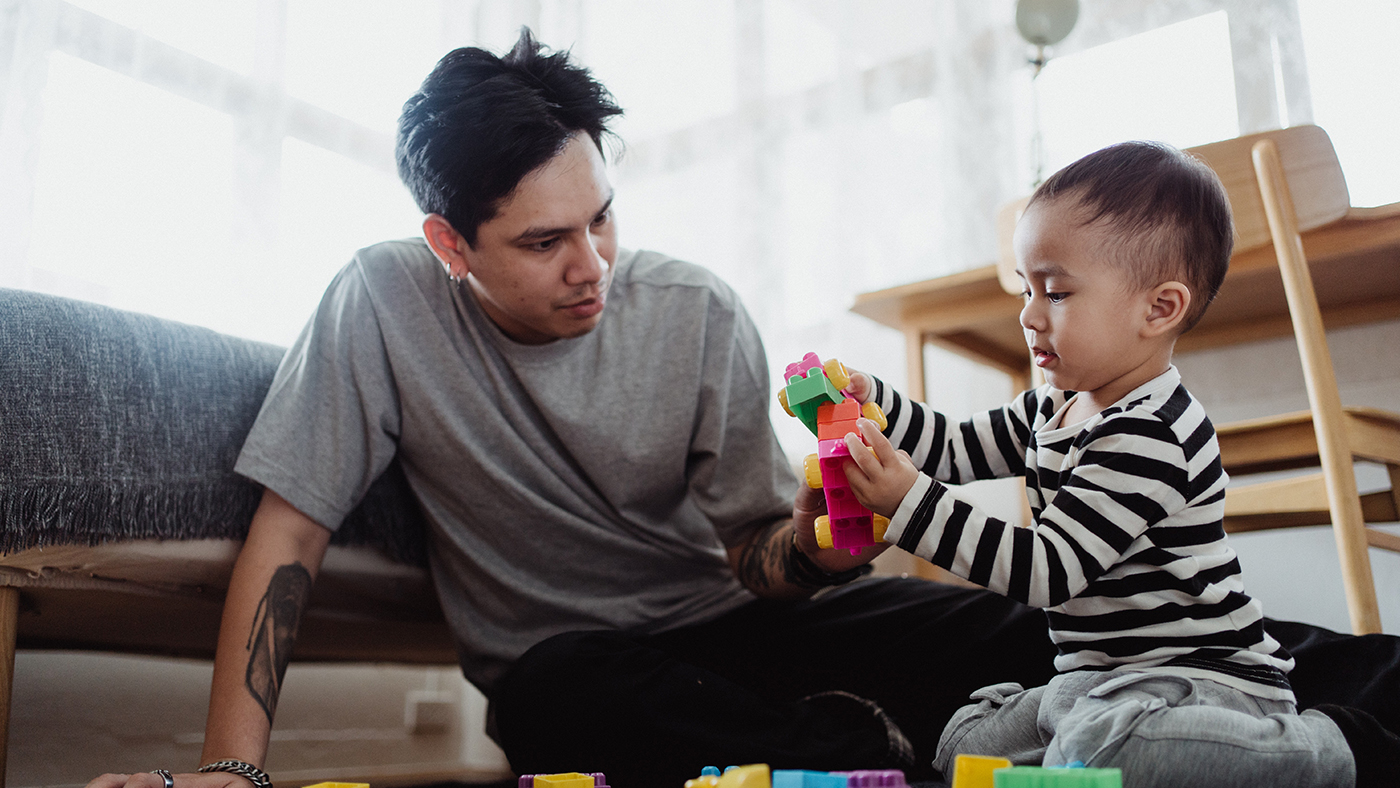Uses large linking bricks such as, Duplo bricks and can push these together and take them apart

The dexterity of your toddler’s hands is much improved and they may have been experimenting with taking lids off containers and moving objects such as sunglasses, a hat or scarf to their head or face. They have made much use of their increased skill of using two hands to perform tasks and this will have been seen when they have carried out tasks such as jigsaws and stirring ingredients in a bowl. They may have also been experimenting with building towers with their blocks.
Proprioception
Proprioception is the sensory system that focuses on the body's awareness of space. It helps the body process how much effort is needed to carry out tasks such as moving and stretching. It also allows toddlers to explore force by creating pressure with their muscles. When playing with blocks, your toddler is using their proprioceptive system to work out how much strength and force is required to join together and pull apart blocks.
Bilateral control, grip and movement
Your toddler’s skills in bilateral control are ever increasing. To place one block on top of another requires both hands to work together to carry out the movement, however, to push two blocks together requires a higher skill as both hands are doing different tasks. They will use many different skills to carry out this task; visual, hand-eye coordination, gross and fine motor.
The fine motor movements in their fingers and wrists help create rotational motions and small adjustments to the position of the hand, enabling more precise movement of the blocks. [1] The gross motor motions, now considerably more coordinated, also allow them to place blocks together with more precision. In addition, their core strength is now considerably developed which helps them to keep their bodies upright when pushing and pulling the blocks apart.
When connecting blocks, your toddler is working out how to handle one block with one hand and apply enough grip to keep hold of it while also figuring out how much force will be required from the other hand and arm to connect the second block to it. It is at this stage where your toddler can now adapt their grip according to the size and shape of the block and will increase their grip when a block requires lifting. [2]
Cognitive development
Cognitive understanding is further developed at this stage. It is around now that your toddler understands that blocks can be joined together, and are not just for building towers. You will now see them plan movements and develop strategies to connect blocks. [2]
What next
Over the next few months and years, your toddler's motions will mature significantly, and they will be able to use more force and pressure when performing tasks as their muscles become stronger. By slowing down their actions, they will improve their precision and fine-tune their movements.
References:
[1] K. E. Adolph (2018). Motor development. In M. Bornstein & M. Arterberry (Eds.). The SAGE encyclopedia of lifespan human development. Thousand Oaks, CA: Sage Publishers, pp. 1450-1453
[2] D. Sugden, M. Wade (2013). Typical and Atypical Motor Development. Mac Keith Press